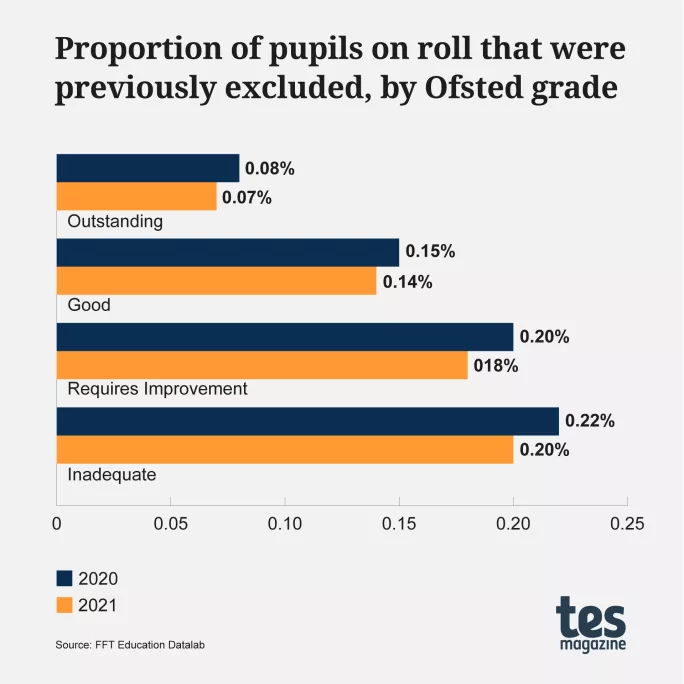The majority of pupils permanently excluded are not admitted to a state-funded mainstream school within three years, a new analysis has found.
Just over a quarter (26 per cent) of those excluded in Year 8 in 2018-19 were attending mainstream schools in January 2021, according to FFT Education Datalab.
Its research shows that primary-aged pupils who were excluded were more likely to be educated in mainstream secondaries in the following three years than those who were excluded from Year 7 onwards.
Three-fifths (60 per cent) of pupils excluded in Year 6 during 2018-19 were attending mainstream schools the following January.
And just under half (49 per cent) of Year 5 pupils excluded during 2018-19 had joined Year 7 in a mainstream school by January 2021.
A new post by FFT Datalab’s chief statistician, Dave Thomson, explores what happens to pupils who have been excluded using figures from the National Pupil Database on permanent exclusions from 2018-19, the last pre-Covid academic year.
It finds that, by January 2020, more than half of pupils who were permanently excluded in 2018-19 were attending state-funded alternative provision schools.
And a quarter of pupils permanently excluded in 2018-19 were not attending any state school by January 2020.
Mr Thomson’s blog said that roughly half of these pupils were attending private alternative provision, while the destination for the other half is not known.
The FFT Datalab analysis has also looked at the destination of excluded pupils by type of school and by school Ofsted rating.
Figures show that schools rated as “inadequate” or “requires improvement” by the inspectorate had more than twice as many pupils on roll who were previously excluded than those rated as “outstanding”.
However, these pupils account for a very small proportion of school rolls.
In 2020, 0.22 per cent of pupils in “inadequate”-rated schools had been previously excluded compared with 0.08 per cent of pupils - less than one in a thousand - in “outstanding”-rated schools.
Across different types of school, studio schools or University Technical Colleges were the most likely to have a previously excluded pupil on roll.
The figures show that 0.68 per cent of pupils in these schools had been previously excluded in 2020. This compares with a state school average of 0.14 per cent.
The analysis also shows that almost 1,500 secondary schools (44 per cent) had zero previously excluded pupils in January 2021.
The blog post says there were 4,188 previously excluded pupils on roll in all state-funded secondary schools in 2020. Following a fall in exclusions in 2019-20, this number fell to 3,978 in 2021.
In the conclusion of his post, Mr Thomson said: ”More often than not, a permanently excluded pupil won’t be admitted to a state-funded mainstream school within three years of the exclusion.
“However, pupils excluded while at primary school will be more likely to be admitted as a result of secondary transfer.
“Many secondary schools don’t have any previously excluded pupils on roll at all. Those rated ‘requires improvement’ or ‘inadequate’ by Ofsted are more likely to have larger proportions.”





